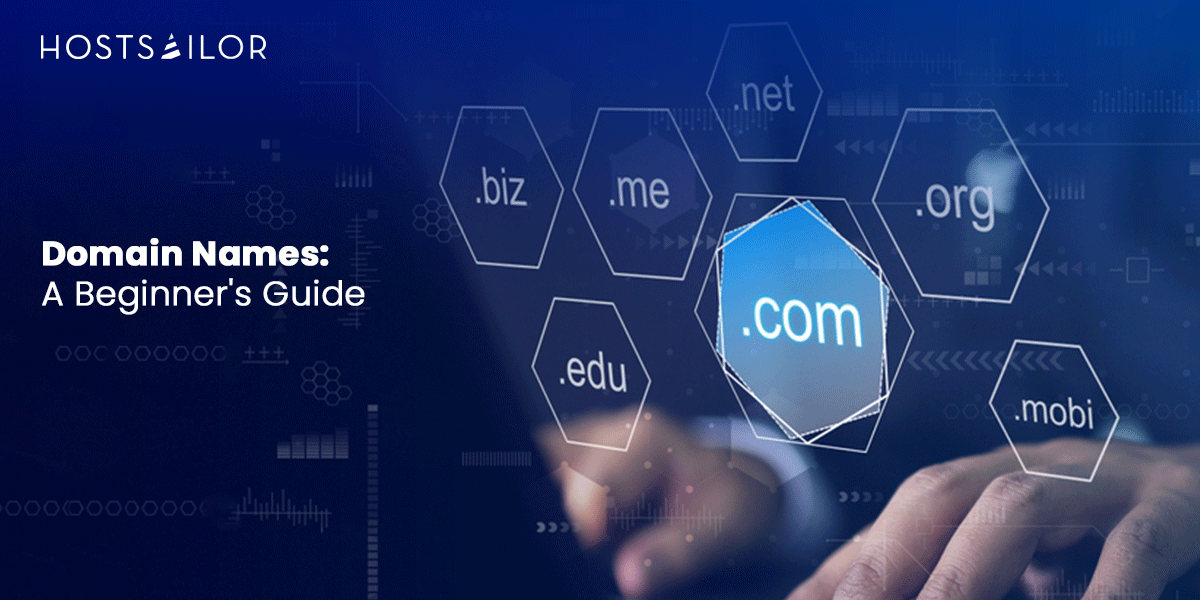

If you’re a rookie in the technical aspects of the web world and don’t know exactly what a domain name is, we’ve got your back. Whether it’s for starting a blog, launching an online business, or an inquiry into the internet infrastructure, this knowledge about domain names becomes critical.
This blog post will cover everything you need to know about domain names, including what they are, how they work, and how to choose the perfect one for your website. Let’s get down to business!
Warming Up: What is a Domain Name?
So, what is a fully qualified domain name? It is a special and unique, human-readable address given to identify a site on the internet. It is what you type in the address bar of your browser to get to a website, like www.google.com or www.example.com.
Think of a it as the online equivalent of a physical address—it directs people to your website’s location on the internet.
Why Are Domain Names So Important?
So, why exactly do you need a good one? Here’s why:
- They are easier to remember than IP addresses (e.g., 192.168.1.1)—we hardly remember our own phone numbers, let alone a complex domain name.
- They make it easier for people to find websites—I mean, duh!
- A good domain name is part of your brand’s identity. Don’t take this lightly!
How Do Domain Names Work?
Now that you have a basic understanding of what a domain name is and why it is important, it’s about time you have learned how it actually works. Here’s a breakdown of the process:
1. When you type the domain name into your browser, a Domain Name System (DNS) serves like the phonebook of the Internet to transform it into an IP address, a string of numbers indicating which server holds the data of that website.
2. The server, hosting the website in question, sends requested web pages back to your browser for viewing
3. The domain name is divided into several levels; among them, the well-known and most common is the Top-Level Domain. The most used TLDs include .com, .org, .net, or country-specific TLDs like .uk or .fr.
There are also top-level sponsored domains, which are specialized domains sponsored by organizations or communities, like .gov for government sites or .edu for educational institutions.
4. The part of the domain before the TLD is the Second-Level Domain (SLD), typically the name of your website (e.g., example in www.example.com). Subdomains are prefixes added to the SLD to create different website sections, like blog.example.com.
How Do You Choose the Perfect Domain Name?
We can’t stress this enough: Selecting the right domain name is a crucial step in building your online presence. Here’s how to do it right:
- Make it catchy, simple, and memorable. Avoid complex words, hyphens, or numbers that could confuse users.
- It should align with your brand name, business, or website’s purpose. It should give users a clear idea of what to expect when they visit your site.
- Having some keywords in it can be very helpful in terms of SEO, making it easier for users to find you online.
- When you buy one, you have to check its availability with the help of a registrar. In case it is not available, you may change it or take other TLDs.
- Since a great domain name is hard to come by, the moment you happen to find it, act fast and register it right away before someone else does!
Bonus Tip: You can use a domain name finder like Nameboy or Namecheap to generate just the right one for your brand.
How Do You Register Your Domain Name?
Registering a domain name is a pretty straightforward process:
- First things first, choose a domain registrar. A domain registrar is a company that holds the reservations of domain names. Some popular domain registrars are GoDaddy, Namecheap, and Google Domains.
- Search for your domain using the registrar’s search tool to see if it is available.
- If the domain is available, you can proceed with the registration. You’ll need to provide some basic information, choose a registration period (typically one year or more), and pay a fee.
- If you want to hide your personal contact details from showing in the public WHOIS database, then you may want to add domain privacy protection, an additional service offered by most registrars.
- After registering your domain, you’ll need to connect it to a web hosting service, where your website’s files will be stored. Some registrars offer hosting services, or you can choose a separate hosting provider, like HostSailor.
Finally, How Do You Manage and Maintain Your Domain Name?
Once your domain is registered, it’s important to manage it properly by considering the following:
- You can only register domain names for a fixed period, which is usually a year. So remember to note down the renewal dates of your domains so that you do not end up losing them. Most registrars will provide you with an auto-renewal feature, which would make things easier.
- Try domain privacy protection to conceal personal information.
- If you need to update the DNS settings (such as pointing your domain to a different server), you can do so through your registrar’s control panel.
- If you decide to switch domain registrars, you’ll need to initiate a domain transfer. This process involves unlocking your domain and obtaining a transfer authorization code from your current registrar.
That’s all! You’re now officially domain name-savvy! Domain names are the cornerstone of your online identity, so choose yours wisely!
If you’re on the lookout for a trusted web hosting provider and want to buy a domain name, contact HostSailor today!
HostSailor also allows you to buy domain with bitcoin, giving you multiple payment options!
FAQs
1. What is a domain name and example?
It is a unique address used to locate a website on the internet. Think of it as a street address for a website. For example, example.com is a domain name.
2. How can I create a domain name?
You can’t “create” a domain name, but you can register one. This means you’re reserving that specific address for your use. To do this, you’ll need to choose a domain registrar, a company that manages domain name registrations. They’ll help you search for available ones and guide you through the registration process.
3. Can I buy a domain with Bitcoin?
Yes, you can buy domain with bitcoin, and many domain registrars now accept Bitcoin as a payment method. This allows you to purchase a domain name using cryptocurrency instead of traditional fiat currency like USD or EUR.





